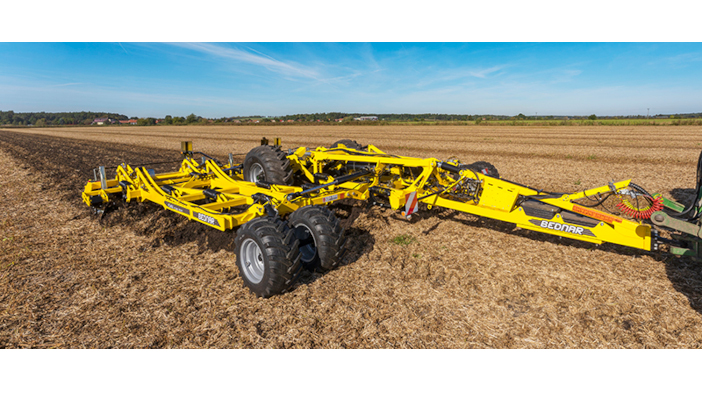For the 2023 season, Bednar is introducing its new generation four-model Fenix FO_PROFI universal cultivator series; available in working widths of 4 to 7.9m and suitable for intense soil cultivation in one pass with the maximum working depth of 35cm.
This new series has a four-row tine configuration, which offers a better throughput of organic matter thanks to the 80cm-high clearance of the main frame. Plus, the tine’s V-shape contributes to the machine’s minimal draft resistance.
The tines can be fitted with chisels with a width of 8.0 and 6.0cm, or long-life chisels with a width of 8.0 and 4.0 cm, fitted with carbide plates for higher durability. The cultivating chisels can also be fitted with 12.5 and 18.5cm wings.
The cultivator’s rear packers – detached from the support frame – are equipped with a parallelogram for improved terrain tracing and working depth consistency. Optional support wheels will further help with terrain traceability and working depth regularity too; hydraulic working depth regulation comes as standard with the FO_PROFI series, however, an electric-hydraulic option is also available.
With the Fenix FO 6004 model there is the option to adjust the working width of the cultivator from 6.7 to 7.9m, to suit a vehicles towing power, with the installation of additional side sections. Optional side sections are also available for the Fenix FO 8004 model.
Parts protection
The FO_PROFI cultivator can be fitted with three different types of working parts overload protection: the basic shear bolt protection, suitable for light soils; the horizontal spring protection with a 480kg release force, suitable for regular soil conditions; and the novel hydraulic protection with a 550kg release force, this is suitable for medium-heavy and heavy soils.
The new generation of FENIX FO_PROFI machines include an integrated transport axle, which the fourth single row of tines is mounted behind. When it is wet, the packers can be deactivated, for soil to be cultivated without compaction. Moreover, the integrated axle reduces the radius diameter at headlands and improves machine manoeuvrability during transport.


